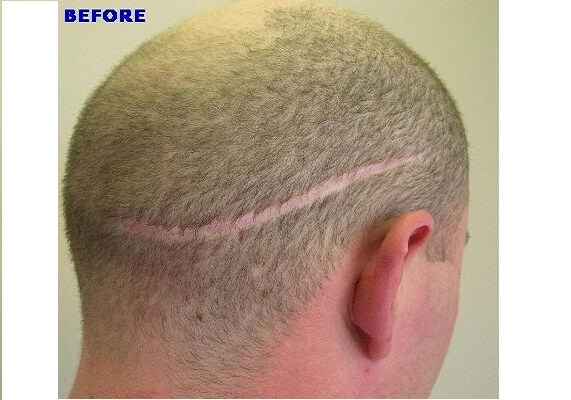A must read for women who are suffering from hair loss
February 21, 2017

Scars look unpleasant no matter where they are. People often believe that a scar on the face is the nastiest among all, but ask people with scars in their scalp and they will tell you that they are equally annoying. There are a number of reasons why one can have scars in the scalp. This can be from some accident or a previous scalp surgery or may be from a previous hair transplant. Regardless of the cause of scalp scar, patients are mostly interested in knowing, “If it is possible to transplant hairs into scalp scars to enhance their appearance?”
Well, in most cases the answer is yes! Transplanting into scalp scars in very much possible and we do this quite regularly here at the Hair Transplant Dubai Clinic. Our hair transplant surgeons are experienced in performing hair transplantations on a wide variety of scalp scars. However, there are certain factors that are taken into account before deciding whether a person is a good candidate for scar revision through transplantation or not.
Transplanted hairs grow in scar tissue as long as it is not very thick. Sometimes the scars are raised above the surface of the skin and this hampers the growth of transplanted hairs. In this case, the scar is first flattened either through cortisone injections or through excision. Once the scar is flat and smooth, hair transplantation is performed.
This may sound strange but some scars are really too thin to allow hair transplantation. The medical term used for scar thinning is “atrophy” and it is quite challenging to transplant grafts into atrophic scars. There are certain techniques to overcome mild to moderate atrophy, but a scar that is too thin may not allow hair transplantation.
Transplanted hair follicles require efficient blood supply for their survival and healthy growth. But sometimes blood supply to an area is reduced due to scarring. This ultimately reduces the chances of a successful hair transplant. Nevertheless, there are certain techniques that surgeons use to improve blood flow into the scarred areas. One commonly used technique is Minoxidil application to the treatment area before and after the surgery.
In general, hair transplantation into scalp scars is quite successful; given the surgeon and the patient follow the pre- and post-op instructions carefully. One tip for a successful surgery is to avoid stuffing the scar with hair follicles. Additional density can achieve any time by adding more grafts in a subsequent session, any time after the initial transplant. Stuffing the scar with grafts packed too closely can result in poor hair growth and unnatural looking result.
Furthermore, you have to take very good care of your transplanted grafts after the surgery as the scarred scalp does not hold the grafts, as well as a normal, healthy scalp tissue, does. This makes the transplanted grafts more susceptible to dislodging.
Schedule A Free Consultation:
To know more about transplanting hair into scalp scars, book a free online consultation now and let our surgeons evaluate you.
Dr. Cagatay Sezgin is a celebrity hair transplant surgeon with over 20 years of experience in hair transplantation and restoration. He is the First Turkish Board Surgeon to become a member of the International Society of Hair Restoration Surgery (ISHRS) and the Asian Association of Hair Transplant Surgeons (AAHRS). Moreover, he has the honor of becoming the first hair transplant surgeon in the world to perform hair, eyebrow, and beard transplantation all in one case and that too in a single session.

February 21, 2017

December 9, 2016

December 11, 2014